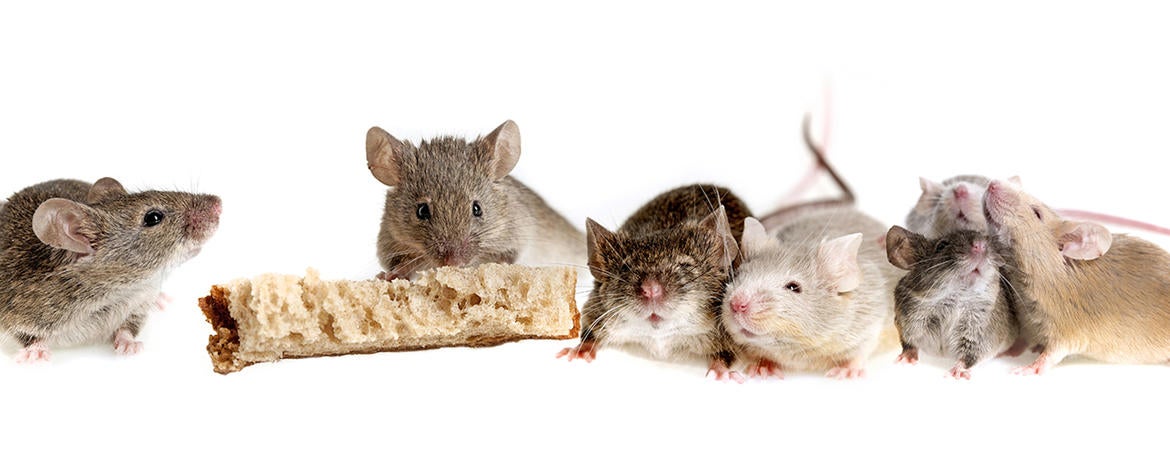
Researchers at the University of California, Riverside, are part of an ambitious plan at the U.S. Environmental Protection Agency, or EPA, to eliminate animal testing by 2035. Their contribution: developing a way to test whether chemicals cause musculoskeletal birth defects using lab-grown human tissue, not live animals.
Nicole zur Nieden, an associate professor of molecular, cell, and systems biology, and David Volz, an associate professor of environmental toxicology, are both experts on alternatives to regulatory toxicity testing and chemicals policy and regulation. They received $849,811 to grow human stem cells into bone-like tissue to test industrial and environmental chemicals that might interfere with fetal growth.
Birth defects that affect musculoskeletal tissues can be caused by chemical ingredients in pesticides, fungicides, paints, and food additives. Harmful chemicals must be identified through testing in order to be regulated. Currently, this testing is done on live animals, usually rodents such as mice.
The UC Riverside project, led by zur Nieden, will stimulate human pluripotent stem cells, which have the capacity to develop into any sort of cell, with agents that direct them to form bone cells. The cells will pass through the same developmental stages and be subject to the same molecular cues as in a human embryo. The researchers will expose the cells to selected chemicals at critical junctures, then assess them using advanced imaging and next-generation sequencing techniques.
Bone cells can develop through three different pathways. zur Nieden will use chemicals known to affect specific routes of bone development to look for patterns in how the chemicals affect these origins. The patterns will serve as blueprints for testing unknown chemicals. Next, the researchers will test unknown chemicals and compare them to previously compiled libraries of compounds that have already been tested in animals to see how accurate the petri dish, or in vitro, tests are for assessing risk.
A hallmark feature of bone-forming cells is that they make a bony matrix out of little crystals called hydroxyapatite, which eventually form calcium phosphate, the white stuff on the surface of all bones. Cost-saving visual analysis can help identify defects in calcium.
“Calcium crystals appear white when viewed with your eyes,” said zur Nieden. “But when you view the cultures using phase contrast microscopy, it inverts the light so the normal crystals appear black. Abnormal crystals will have more white and shades of gray. You can use an image analysis algorithm to measure the blackness in images to determine if the calcium has formed correctly or not.”
Non-animal tests are already commonplace
Scientists have known for a long time that animals differ from humans in important developmental and physiological ways, and that animal test results are not always reliable for people. Moreover, animal research is expensive and time-consuming, as well as increasingly untenable for ethical reasons. Non-animal alternatives have been in development for nearly 25 years, and some are already standard.
“To the general public, the EPA’s announcement seemed to come out of nowhere,” said Volz, whose lab will sequence messenger RNA in chemical-exposed bone cells from zur Nieden’s lab to look for changes in gene expression. “It didn’t happen overnight. That train has already left the station.”
Volz said the EPA’s Science to Achieve Results Program, through which UC Riverside received the new grant, has been funding research on animal alternatives for more than 10 years.
The EPA’s plan to end animal testing by 2035 follows up on earlier changes to the Toxic Substances Control Act, or TSCA, enacted in 1976. TSCA authorizes the EPA to regulate chemicals found in consumer products such as cleaning agents, furniture, paint, carpeting, clothing, and other consumer goods. Regulation under TSCA does not apply to chemicals in food, drugs, cosmetics, and pesticides, which are regulated under different laws.
Even after TSCA, thousands of common chemicals used in everything from plastic to sunscreen have never been tested for safety in humans. In 2016, Congress passed the Lautenberg Chemical Safety Act, amending TSCA to close the loophole for industrial chemicals. The law mandated the EPA to evaluate existing chemicals with clear and enforceable deadlines, and to develop risk-based chemical assessments. It promoted the use of non-animal testing methods, a move sought by both industry and animal rights groups.
Animal alternatives might have limits
The new EPA plan introduces an aggressive timeline for ramping up development of non-animal tests that can accurately predict toxicity in humans. Volz said the United States lags behind some other countries around the world, which have already greatly reduced animal testing. He said he interacts with fewer and fewer students interested in research involving animal experiments, and that our culture is shifting toward a desire to reduce animal suffering.
But neither Volz nor zur Nieden are sure animal testing can ever be replaced completely, a position echoed by the EPA memo, which states that after 2035, animal tests will be approved on a case-by-case basis. Some chemicals, for example, are not directly toxic to cells but become toxic after they are metabolized in the body.
“If your result is that the chemical does not interfere with a human stem cell developing in a dish, how sure can you be that’s not really happening in humans? The best way we have to assess that is an animal experiment,” zur Nieden said. “At the same time, we want to do this in an appropriate way. We need to think about, is this really necessary? Can we look at the question some other way?”
zur Nieden thinks we need a tiered system, with in vitro tests weeding out the most toxic chemicals first, and animal tests used where in vitro tests don’t reveal toxicity.
“If you cannot fully replace an animal test with an in vitro method, you can at least decrease suffering of the animal. If you think about a highly toxic chemical that has effects on the mom as she is exposed during pregnancy as well as on the developing embryos, if you can use an in vitro test system to find all these strong toxic chemicals, you will not need to test them in an animal,” she said.
Previous versions of the test system zur Nieden will use for the new musculoskeletal research have been able to identify embryotoxic chemicals for other tissues, such as heart tissue, with almost 100% accuracy.





